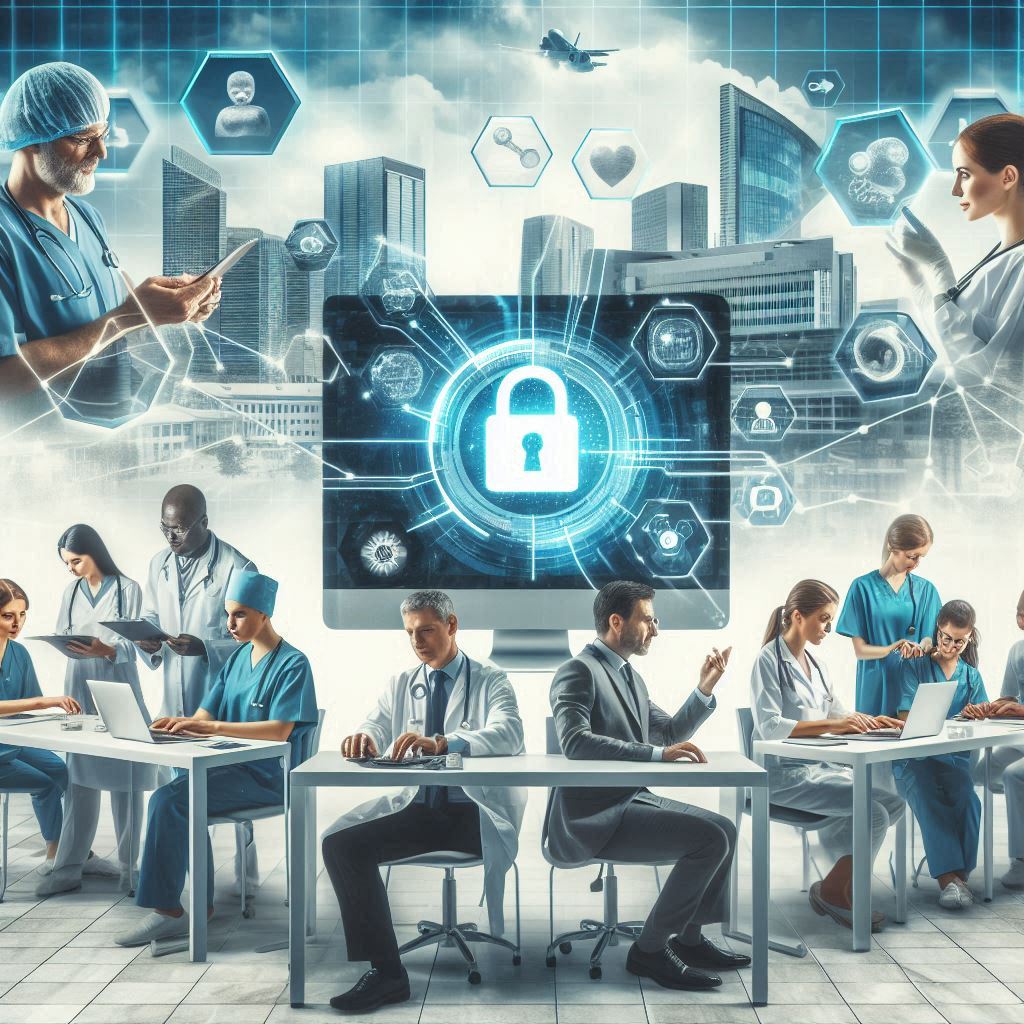
Understanding Governance, Risk, and Compliance (GRC)
The podcast explore Governance, Risk, and Compliance (GRC), a crucial framework for organizations to align IT with business goals, manage risks, and adhere to regulations. They emphasize GRC’s increasing importance due to rising cyber threats, complex regulations, and stakeholder expectations.
The Podcast outline the core components of GRC, drivers for its adoption, key implementation steps, and available solutions, including the role of Managed Security Services Providers (MSSPs). Ultimately, a strong GRC framework is presented as vital for enhancing security, ensuring compliance, building trust, and achieving sustainable business operations.
Please listen our podcast about GRC in Managed Security Services
FAQs about GRC
1. What are the core components of Governance, Risk, and Compliance (GRC), and how do they interrelate within an organization?
GRC is a structured framework comprised of three key components: Governance, Risk Management, and Compliance. Governance establishes the organizational structure, policies, and processes that guide decision-making and ensure IT aligns with business objectives. It defines roles, responsibilities, and accountability. Risk Management involves identifying, assessing, and mitigating potential threats and vulnerabilities that could harm an organization’s assets, operations, or reputation. This includes developing risk response strategies and monitoring their effectiveness. Compliance ensures adherence to external laws, regulations, industry standards (like GDPR, HIPAA, PCI DSS), and internal policies through audits, reporting, and documentation. These components are interrelated as effective governance sets the direction and accountability for risk management and compliance efforts. Risk management informs compliance requirements by identifying areas of potential regulatory exposure, and compliance provides tangible requirements that governance and risk management must address. Together, they form a holistic approach to managing an organization’s security and operational integrity.
2. Why is GRC considered increasingly important for organizations in today’s digital landscape?
GRC has become vital due to several converging factors in the modern digital landscape. Firstly, the escalation of sophisticated cyber threats necessitates a proactive approach to protect sensitive data and ensure business continuity. Secondly, the ever-evolving stringent regulatory environment across industries demands that organizations adhere to complex laws and standards to avoid penalties and reputational damage. Thirdly, the increasing complexity of IT environments, driven by cloud adoption, mobile devices, and IoT, makes managing security and compliance significantly more challenging. Furthermore, GRC helps organizations ensure business continuity by minimizing the impact of disruptions and protects against reputational damage resulting from security incidents or non-compliance. Finally, stakeholders, including customers and investors, increasingly expect organizations to demonstrate strong governance and risk management practices.
3. What are the primary drivers that compel organizations to adopt GRC frameworks?
Several key drivers push organizations towards adopting GRC frameworks. Legal and regulatory requirements are a fundamental driver, as compliance with laws and industry regulations is mandatory to avoid legal repercussions. Adherence to industry standards also plays a crucial role by demonstrating a commitment to security best practices and enhancing trust. Risk mitigation is a significant driver, as GRC helps proactively identify and address potential threats, reducing the likelihood and impact of adverse events. Aligning business objectives with IT activities ensures resources are used effectively and contribute to organizational success. Lastly, stakeholder expectations from customers, investors, and partners demand responsible and compliant operations, making GRC a necessity for maintaining their trust and confidence.
4. What are the key steps involved in implementing a GRC approach within an organization?
Implementing a GRC approach involves a structured series of steps. The process typically begins with establishing a GRC framework that outlines the organization’s principles, policies, and processes. Next is to identify and assess risks through regular risk assessments to understand potential threats and vulnerabilities and their potential impact. Based on this assessment, organizations must develop risk response strategies by implementing controls and safeguards. Ensuring compliance with relevant regulations and standards is crucial, involving audits, monitoring, and reporting. Continuously monitoring and evaluating the effectiveness of GRC controls and processes allows for necessary adjustments. Finally, establishing clear channels for reporting and communication of GRC-related information to stakeholders is essential for transparency and accountability.
5. What types of GRC solutions and tools are available to help organizations manage their GRC efforts?
A variety of GRC solutions and tools exist to streamline and automate GRC activities. GRC platforms provide integrated software for managing governance, risk, and compliance in a centralized manner. Risk management tools, such as vulnerability management and threat intelligence platforms, aid in identifying and mitigating risks. Compliance management tools automate compliance monitoring, auditing, and reporting. Security Information and Event Management (SIEM) systems collect and analyze security data to detect and respond to threats. Additionally, Managed Security Services Providers (MSSPs) offer GRC-related services like risk assessments and compliance audits. Other specialized tools cover areas like policy management, incident management, third-party risk management, and identity and access management.
6. How do Managed Security Services Providers (MSSPs) incorporate GRC into their offerings, and why is this important for their clients?
MSSPs integrate GRC into their services by offering a range of capabilities designed to help clients manage their governance, risk, and compliance responsibilities. These services can include conducting risk assessments, performing compliance audits against various standards, providing security monitoring to detect potential breaches and non-compliance, and assisting with incident response in a way that considers regulatory requirements. This integration is crucial for clients because it provides them with expert support in navigating the complexities of the threat landscape and regulatory requirements. By leveraging an MSSP’s GRC expertise, organizations can bolster their security posture, ensure they meet necessary compliance obligations without needing to develop deep in-house expertise, and ultimately reduce their risk exposure and potential for penalties or reputational damage.
7. What role do stakeholders play in the development and success of a GRC program?
Stakeholders are critical to both the development and ongoing success of a GRC program. Initially, identifying key stakeholders is essential for shaping the GRC strategy and defining its scope within the organization. These stakeholders, which can include leadership, IT departments, legal teams, and business units, contribute to articulating the objectives of the GRC strategy, defining success criteria, and establishing roles and responsibilities. Their alignment with the GRC implementation plan and budget is crucial for establishing a top-down focus and ensuring the program receives the necessary support and resources. Consistent communication with stakeholders, allowing them to operate independently while keeping them informed, fosters acceptance and demonstrates the value of the GRC program as it evolves and adapts to business changes. Ultimately, the buy-in and active participation of stakeholders across the organization are fundamental for a GRC program to be effective and sustainable.
8. What is the overall benefit of adopting a robust and well-implemented GRC framework for an organization?
Adopting a robust and well-implemented GRC framework offers numerous significant benefits to an organization. It allows for better alignment of IT activities with business goals, ensuring that technology investments and efforts support strategic objectives. It leads to more effective risk management, reducing the likelihood and impact of security incidents, financial losses, and operational disruptions. GRC ensures compliance with relevant laws, regulations, and industry standards, helping to avoid costly penalties and legal issues. Furthermore, it enhances business continuity by proactively addressing potential threats and ensuring resilience. A strong GRC framework also builds stakeholder trust by demonstrating a commitment to security, responsible operations, and data protection. Ultimately, it contributes to a more secure, compliant, and sustainable business operation, protecting the organization’s reputation and long-term success.















